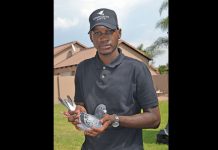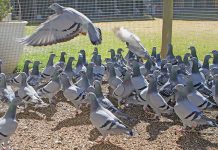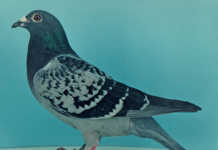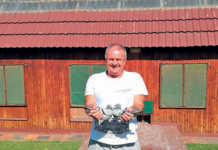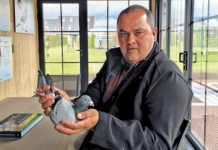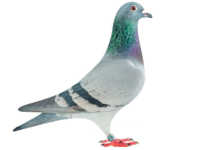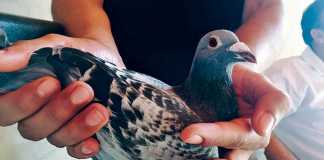Veteran SA racing pigeon fancier Theo Mienie is a member of the Mooirivier Resiesduif Klub (Mooi River Racing Pigeon Club), under the banner of Westelike Posduif Unie (Western Pigeon Union). His reputation as a skilled fancier and importer of high-quality genetic material has spread far beyond our borders. His active participation in the sport will be missed, but his presence will endure through the feats of the offspring of his pigeons.
The auction of his pigeons at the Alberton Homing Society will take place on 23 January, 2016.
Few pigeon fanciers can boast an association with the sport as long as Theo’s.
“I was introduced to the sport by my older brothers at 10,” he recalls. As Theo is now almost 77, that means 67 years’ experience of racing pigeons.
“Although I enjoyed my fair share of wins, I was always more interested in the breeding aspects of pigeon racing. I’ve always felt honoured when pigeons I’ve sold or given to friends have done well. I was Mooirivier Resiesduif Klub points champion – in different seasons over the years – and received my SANPO [SA National Pigeon Organisation] Merit Award for pigeon racing in 2007. In 2014, my pigeon Akasha came second in the final event of the Dinokeng International One-Day Loft Race.”
He placed 14th in the final event of the SA Million Dollar Pigeon Race in 2004, was first Hot Spot and second and third in the Allflight Finals, and was 12th in the SANPO Loft South final.
Foundation stock
“Being from the old school, I have a soft spot for our proudly South African Golden Oldies,” says Theo.
“However, I soon realised that most, if not all, had originated from earlier imports. For this reason I was always on the hunt for fresh blood from Europe that could fly out in front of the pack against the strongest competition. I focused on the Belgium strains as Antwerp is known as the heart of pigeon racing, because it’s where pigeon breeding first emerged.”
Theo invested a small fortune in importing stock pigeons. These included the Oscar de Vriendt line, handpicked and imported from the De Vriendt brothers; Houben, handpicked and imported from Belgium; Lou Wouters birds bought from the late Dr Brymer; Putterie/Slimmes, from the late Sonny Kippen and late Albie Lamb; and ‘De Klak’ Janssens, bought from Jos van Limpt.
Then there are the Janssen Arendonck birds, handpicked and imported from the Janssen Brothers lofts in Belgium, and the father of the famous Spritzy hen, a direct Vos Voliere son.
“I imported eight Piet Manders, which are now three years of age,” adds Theo. “I sold a red cock to Des Humpel, which bred 12 winners (direct Vos Voliere). Frikkie du Plessis had three wins with a grandson of the Vos Voliere line during the 2015 season. All eight imported pigeons are still in my loft and I’ve bred about 50 birds from them.”
Theo favours line- and inbreeding.
Training methods
Training comprises 150km to 250km of flights a week during the racing season, with 30km afternoon road training two to three times a week. “Keep a balance between rest and exercise,” advises Theo.
He stresses that loft ventilation is crucial.
“Keep air bricks closed in winter to ensure the pigeons stay warm.”
Offering advice to beginners, Theo says: “To successfully start up in the pigeon game, you need high-quality pigeons. The sport has become extremely competitive. It can be expensive, but with quality pigeons, proper training and correct feeding, top results are achievable.”
He stresses the value of experience.
“There are many older fanciers, all with many years’ experience, from whom one can gain expert advice. Money can buy many things, but experience is earned through years of trial and error.”

